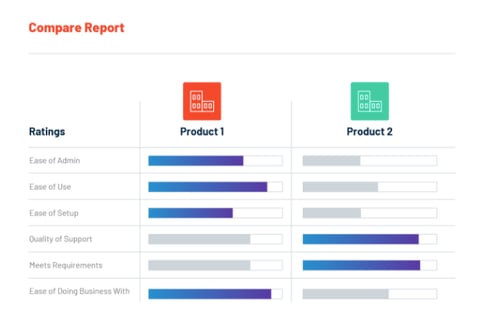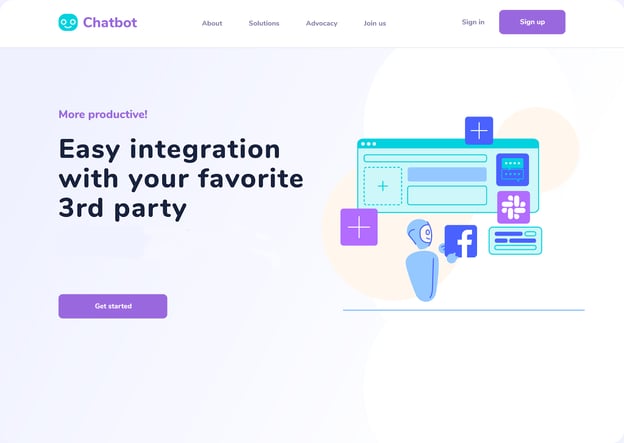Your B2B Strategy Needs Intent Data - Do You Know How to Use It?
0 min read
Any marketer worth their salt has heard of intent data as a whole but very few understand the finer details and how to use it.
When deployed properly, you can accelerate and grow demand for your product and reduce your cost of acquisition (CAC) substantially.
When misunderstood it can drive up your CPMs without moving the needle.
So how do you ensure you’re getting the most out of intent data? First, you need to understand how it works.
What is intent data and how does it work?
Intent data, at its core, is data that helps us to understand whether a buyer has an intention to buy our product (or the product of one of our competitors).
The most common form of intent data is one that you have no-doubt leveraged before - whether you knew you were doing it or not. It is 1st party intent data, and if you are selling a product, you can think of it as data that comes from your own website.
For example, if someone adds a product from your ecommerce store to their cart, we can assume that there is some intent to buy there.
If someone goes to your pricing page or case study page, then there is also some intent involved.
While these sources are great, how do you capture the intent of those who might be viewing competitors or looking at your product on a 3rd party site, (like G2 or Capterra for SaaS products), and not on your website where they can be retargeted based on those 1st party data signals?
Well, you need to get a data tool like Bombora, ZoomInfo, G2, or Gartner for that.
So let’s explore the intent data that each of these tools provide!

(image source G2)
Types of Intent Data - Bombora and ZoomInfo
When considering Bombora and ZoomInfo, it is very important to ensure that you understand the taxonomies that are applicable to your product or service so that you can set up your intent topics properly. You want to make sure you’re targeting an audience that has intent for your product, and setting up your intent topics in-platform is the way to do it.
While some businesses may have very obvious and clear intent topics, others may be a bit more difficult to land on. This is why you want to ensure you have an expert working with you - the wrong taxonomy can lead to a lot of wasted ad dollars.
With over 7,000 intent topics to choose from, you will likely find at least 4-5 that work for your business (even if your solution is an navient one) and be able to use those topics to find people who you would not have otherwise known were searching for your solution!
Within a tool like Bombora or ZoomInfo, the intent signal means that a company’s domain is showing a 60%+ increase in activity related to your intent topics. This information is collected directly from publishers, not the click stream, so it is reliable.
Bombora updates intent signals each week. ZoomInfo updates them daily. In my opinion, this should not influence which one you choose. In the time horizon of a B2B purchase, a week is not a lot of time.
Don’t forget - in addition to intent, you can layer on install data to your targeting. If you know that people using X tool are great fits for your product, you can target them with a message that lets them know how beautifully your tools work together.
For example, let’s say that you are Outreach and your product works very well with Salesforce - you can build a profile to target that includes your intent topics and the install data. This will make your profile more precise and allow you to speak to the audience as if you know what CRM they are using and how your product will make it better.
You can either pair install data with intent or you can choose to use one or the other.
Types of Intent Data - G2 and Gartner
Intent data from G2 and Gartner is a bit different. Rather than gathering data and signals from thousands of publishers like Bombora, G2 and Gartner get 1st party data from their own platforms and allow you to use it to target your audiences.
Take G2 for example. Their top-level package allows you to target people who viewed your profile, your competitor’s profile, your category, or a comparison of products within your category.
As a bonus, they even let you layer on some Bombora intent topics so that you can truly dial in your audience if your category includes products that are similar but not direct competitors of yours. That extra layer of intent data will ensure that you are targeting an audience that is truly interested in your product or service and not something adjacent to you.
Gartner works in a similar fashion.
The downside to using G2 is that you are not able to deploy your audiences beyond LinkedIn, which is a great platform for B2B, but leaves some opportunities for cheaper impressions out of the equation.
View our full comparison chart here
How to Use Intent Data from a Strategic Level
You can use intent data in your ABM strategies to do a number of things, like:
- Update your CRM when a target account goes from awareness to consideration, even if they did not interact with your brand or assets
- Move audiences into the proper campaigns based on their funnel stage
- Customize messages throughout your funnel based on intent and install data
- Ensure appropriate outreach by sales based on where an account is in their buying journey
Intent data allows you to update your strategies in infinite ways!
How to Use Intent Data at the Technical Level
While it may be easy to understand what intent data is, deploying it is a bit trickier!
Here are a few tips that will help you to navigate:
- Bombora (this is the tool we use at Digital Reach, and we give clients access to our account, so I know the most about this tool, to be fair!) allows you to start from one of two places for your intent targeting:
- Upload a list of target accounts that you have already identified
- Build an ICP and Bombora will find accounts that match
- Create the audiences that you want in your various ad platforms (LinkedIn, Facebook, and DSPs)
- Add install data to any audiences that you want
- Align your platform audiences with your Bombora audiences
- Deploy your ICP/target account list (TAL) through Bombora pre-intent signals
- This is key because it allows you to send audiences that are normally only available on LinkedIn (job title, job function, etc.) and push them to your DSP or Facebook
- When intent occurs those accounts will automatically be removed from this audience
- Deploy your ICP/TAL through Bombora with intent
- The system will automatically remove accounts that no longer have an intent signal from your audiences
- Expand your audiences when intent is signaled to create a buzz about your brand - but do it tactfully. Traditional aircover doesn’t work with the post-pandemic buyer!
- Once you capture an email address then you can use your marketing automation platform to shift ad audiences based on your lifecycle stages or behavior on your own website
- Intent is good to move people to the point where they are engaging in your brand and you have enough data to shift targeting

Don’t miss the magic of intent data
Intent data is a powerful tool for B2B marketing, especially for SaaS companies.
When deployed well, you will be more nimble, personalized, and in the right place at the right time with your target accounts more often.
It is important to do it right though, so consult an expert before getting started! Topics, targeting, and messaging need to align properly with intent in order to get the results you’re capable of.
Lastly, don’t let platform costs get you down. A good agency will have access to these tools for you so that you don’t have to lay out 10’s of thousands of dollars to use the best data out there for your revenue growth goals! Bombora for ads and a solid marketing automation platform are enough to get you started!





